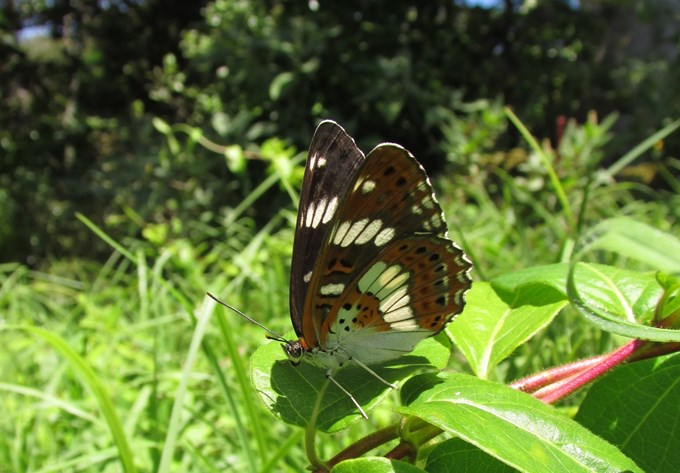Over a couple of weeks in February, the Auckland Council Biosecurity team with assistance from Landcare Research launched the latest in a round of biocontrol attacks on Auckland’s weeds.
This time the target was the invasive Japanese Honeysuckle weed on Waiheke Island. The ammunition was a kaleidoscope of mature Honshu white admiral butterflies and several hundred Honshu white admiral caterpillars. The release site was Auckland Council land near Matiatia.
Biocontrol is the use of a plant’s natural enemy to attack the plant and limit spread. In this case the Honshu white admiral, named after the Japanese island from which it originates, has a fondness for Japanese Honeysuckle – in fact, it’s the only thing it eats.
Establishing the population
The Honshu white admiral has successfully established in the Waikato after releases in 2014 and this month’s release on Waiheke is actually the second for the island.
Auckland Council's Biosecurity Advisor for Waiheke, Deryn Dromgoole, says the previous Waiheke butterfly release and Landcare’s breeding programme has suffered a few setbacks since 2014, but the programme is fully up and running now.
Deryn says, “We anticipate that, with the number of caterpillars soon to mature into butterflies and the eggs that the new butterflies will lay, we will start to see a growth in the population of the Honshu white admiral on Waiheke and a positive impact on Japanese Honeysuckle.”
The black, white and brown butterfly us quite small: its wingspan is only 6cm. It lives for only one month but during that time lays around 200 eggs. As the caterpillars hibernate in cold weather, the Honshu white admiral is usually seen in warmer months.
Development from an egg to an adult butterfly can occur in as little as eight weeks at warm temperatures. Egg to caterpillar takes about one week. After about six weeks the caterpillar is fully grown and it then sheds its skin to form a light green and brown pupal case suspended from the plant. One week later it emerges as a butterfly.
Tell us if you spot it
Deryn says, “If you see this butterfly please leave it to do its good work and also avoid controlling Japanese Honeysuckle in that area – it’s important that the weed is present long enough for the population of butterflies to fully establish and become a viable and sustainable threat to the weed.”
Deryn says that sightings of this particular butterfly will be of great value to the biocontrol programme.
"If you do see one of these butterflies please send us a photo if possible and the location and date of the sighting – we would be most grateful. Information can be emailed to biosecurity@aucklandcouncil.govt.nz."
Weed volunteers working tirelessly in the area have welcomed the butterfly release as another tactical method to protect and restore the biodiversity of the island. Japanese Honeysuckle grows quickly and smothers any plant it comes into contact with, posing a significant threat to native bush.


